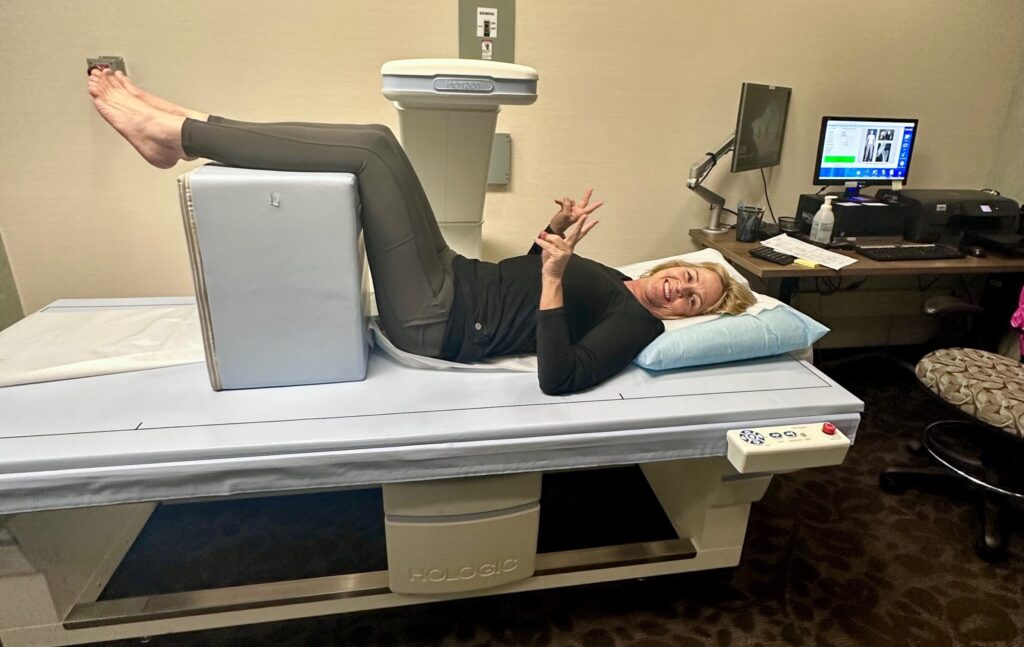Should You Trust Your DEXA Scan? A Surgeon Weighs In.
DEXA (Dual-energy X-ray Absorptiometry) scans are the gold standard for diagnosing osteoporosis and assessing bone density—but most women don’t realize how often these scans are misread, misused, or misunderstood.
In this five-part interview series, Debi Robinson sits down with Dr. Nick Birch, a UK-based orthopedic physician and bone health specialist, to demystify the DEXA scan—how it works, what the numbers mean, where the errors often happen, and how you can become your own advocate.
Watch the videos, read the summaries, and learn what to look for on your next bone density test.


DEXA Scan Basics – What Every Woman Should Know
What is a DEXA scan? What does it actually measure? And why are so many results misleading?
Topics Covered:
What DEXA scans do—and don’t—measure
Common artifacts that affect scan accuracy
How spinal curvature, posture, and even bras with underwire can skew your results
What the T-score and Z-score actually mean
How to sense-check your scan for reliability
How to Read a DEXA Scan Like a Bone Health Expert
Dr. Birch explains how to interpret your DEXA scan results—and what red flags to look for.
Topics Covered:
Key regions of interest (ROIs) on a scan
The importance of symmetry and positioning
Why a straight spine matters
When to question a scan result—and how to ask the right questions
Why reading the full report matters (not just the lowest number)
How DEXA Results Are Calculated—And Why They Can Be Misleading
Your T-score isn’t the whole story. Learn how body weight, posture, ethnicity, and technician error can all affect your results.
Topics Covered:
How BMI, ethnicity, and positioning affect bone density calculations
The role of normative databases and human error
The danger of relying on one number for diagnosis
Why changes in weight can shift your T-score even if your bone health hasn’t changed
What is the Z-Score? How It Differs from Your T-Score
Understand the age-adjusted Z-score and why it might be the more relevant number—especially if you’re proactive about your health.
Topics Covered:
Z-score vs. T-score: What’s the difference?
Why Z-score reflects your bone health relative to your age and build
When a “low” T-score doesn’t tell the full story
How to track your progress using both scores
Key Markers to Look For on Your DEXA Scan
Dr. Birch walks through specific indicators that help you verify the scan’s reliability—and how to advocate for better testing.
Topics Covered:
Concordance and discordance between spine and hip
What spine readings should look like—and when they signal technical error
The role of Trabecular Bone Score (TBS) in understanding bone quality
How to spot misreads and demand a second opinion
Takeaways: How to Become Your Own Bone Health Advocate
Before you accept a diagnosis based on a DEXA scan, make sure:
The scan was done accurately, with proper posture and positioning
There are no artifacts like jewelry, implants, or spinal curvature affecting results
Your Z-score and T-score are being interpreted in context
You’re not being rushed into medication without a second look
You deserve better than a one-size-fits-all diagnosis.
Frequently Asked Questions (FAQs) on the DEXA scan
What is a DEXA scan and why is it important for bone health?
A DEXA scan (Dual-energy X-ray Absorptiometry) is a diagnostic test that measures bone density. It helps identify osteoporosis and assess fracture risk.
What’s the difference between a T-score and a Z-score on a DEXA scan?
The T-score compares your bone density to a healthy 30-year-old. The Z-score compares it to others your age and body type—often more useful for monitoring trends.
Can a DEXA scan be wrong or inaccurate?
Yes. Poor positioning, spinal curvature, metal implants, or even body weight changes can skew the results. Many scans are misinterpreted or technically flawed.
How often should I get a DEXA scan?
Most guidelines recommend every 2 years, but it depends on your age, bone health, risk factors, and whether your last scan showed meaningful changes.
What is a good Z-score for women in menopause?
A Z-score close to 0 is average. Negative scores below -2 may indicate low bone density for your age, especially if accompanied by fractures or risk factors.



